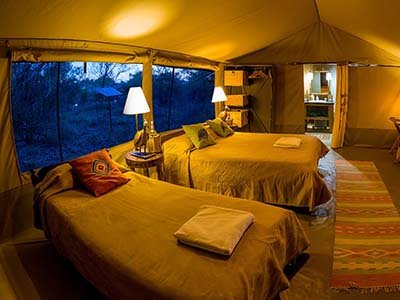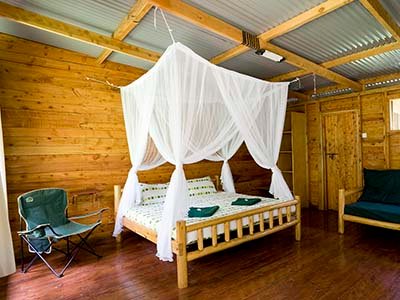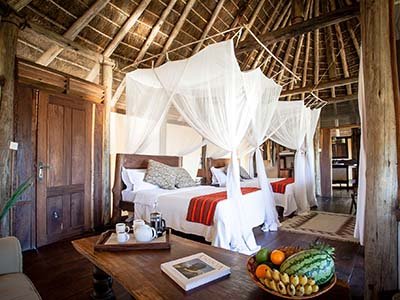Kidepo Valley National Park was established as a wildlife reserve in 1958 and was designated as a national park in 1962. It is under the Management of Uganda Wildlife Authority. The park is approximately 1,442 Square kilometers with an elevation range of 914 m to 2,750 m above sea level.
It attracts visitors seeking less travelled expanses of the African wilderness. The park, which is hidden away on Uganda’s border with Kenya and Sudan, offers stunning Savannah landscape views that end in a rough horizon. A flora with a great variety in latitude and similarly varied climatic conditions has developed. Because of this, the park is home to a wide range of animal species, many of which are unique to Uganda.
Location of Kidepo Valley National Park
Kidepo Valley National Park is situated in the country’s extreme north-eastern corner, between Kenya and South Sudan, at the furthest extent of the vast, scarcely inhabited Karamoja area which makes it the most remote park in Uganda
The Kidepo environment is one of East Africa’s most stunning rugged wildernesses, with meadows grazed by large game favourites reaching to steep mountains in all directions. The plains around the park are studded with the manyattas (homesteads) of Karamoja’s staunchly traditional pastoralists, making it a culturally rich environment.
Kidepo Valley National Park is tucked away in a hidden valley in the far northeast of Uganda, and it offers some of the most breathtaking landscape of any conserved region in Uganda. Lonely Planet
The park is divided into two large, shallow valleys called Kidepo and Narus. These are drained by seasonal “sand rivers” in the Morungule Mountains that flood momentarily following rainstorms during the rainy season.
For the most part, the Kidepo Valley and its tributaries are entirely dry, but residual puddles remain along the Narus Valley. These were historically vital water sites for which local clans contended during the dry months they are the only source of water in the park during these months (Narus means “muddy area”).
Being the park’s main permanent water source, these ponds are equally important for wildlife. As a consequence, the park’s wildlife, tourist activities, and infrastructure are concentrated in the Narus Valley’s southern reaches, particularly at Apoka.
Wildlife in Kidepo Valley National Park
The park’s plants and animals are more like those in Kenya than in the rest of Uganda. Small hills, rocky outcrops, and inselbergs dot the landscape of the park, providing breathtaking vistas in all directions. The vegetation, which varies greatly in structure and composition, is best categorized as open tree Savannah. Some of the higher elevations are covered in mountain forests, while the Lorupei River Valley has extensive Acacia geradi forests.
Mammals
Despite the high temperatures, Kidepo’s savanna, shrub, and woodland environments support an array of animals, including 86 mammal species. Indeed, it is Uganda’s only sanctuary for a number of species, including the striped hyaena, cheetah, caracal, bat-eared fox, white-eared Kob, as well as the lesser-known Maneless zebra, which is only found in Kidepo and Pian-upe game reserves.
Though buffalos are widespread in Uganda, their large seasonal gatherings in Kidepo’s Narus Valley never cease to astonish. Elephants, Nubian Giraffes (formerly Rothschild’s giraffes), lions, leopards, spotted hyaenas, and black-backed and side-striped jackals are also present offering some of the best game viewing opportunities of any Ugandan National Park.
Both the white-eared Kob and the Mongalla gazelle have been documented, with the Mongalla gazelle being reported for the first time in January 2021. Both of these species are mostly found in Southern Sudan.
In May 2017 about 150 Uganda Kobs were translocated from Murchison Fall National Park to Kidepo valley National Park to boost the antelope population there in order to sustain the carnival populations including Cheetah Lion, Hyena and Leopard.
Activities and Attractions on a Safari in Kidepo
Game Drive in Narus Valley
The Narus Valley, south of Apoka, is the park’s best game-watching region, with species congregating here for most of the year. Look for buffalo in the valley floor wetlands, giraffes on the drier slopes above, and lions on the granite outcrops. Aside from the major game circuits at Kakine, Katurum, and Nagusokopire, freshly formed loops north of Apoka and south of the seasonal Crocodile Pool have opened up additional valley regions for exploration.
View Points
Apoka Rest Camp, Nagusokopire Campsite, and Kakine Campsite now feature binocular Viewpoints. The latter has a stunning 360-degree view of the Napore-Nyungea range, the Morungule mountain ranges, and Mount Lomej in South Sudan.
Kidepo Valley Drive
In contrast to the Narus, the dry Kidepo Valley is light in the big game but gigantic in beauty, and its immense size more than rewards the 30 km trip from Apoka.
Stop at Lokimorigen on the Narus-Kidepo watershed for a beautiful view of South Sudan’s towering, 2975-meter-high Jebel Lotuke before descending to the Kidepo River crossing to stroll on the dry, sandy riverbed. Mammals are uncommon on the wide semi-arid plains beyond the river, although ostriches and secretary birds are common. Kanangorok Hot Springs, a modest grouping of tiny hot springs near the South Sudan border, is an easy 11-kilometre detour. This activity requires a ranger guide escort since it borders with South Sudan in a location known for occasional poaching.
Guided Nature Walk
Short nature excursions surrounding Apoka Rest Camp allow visitors to see zebras, hartebeests, and reedbucks. Longer hikes across East Kakine’s broad grasslands should provide sights of giraffes, buffalo, elephants, and maybe distant lions. Visitors may also explore part or all of the 15-kilometer Rionomoe Trail on the Narus valley’s southern side. A ranger guide is required for all hikes.
Bird Watching in Kidepo Valley National Park
The park has 424 bird species, second only to Queen Elizabeth National Park in Uganda, which has 604 species. Over 100 “dry country” inhabitants of northern Uganda and Kenya are included on the list, including a handful that is native to the Kidepo area, such as rose-ringed parakeets, Clapperton’s francolins, and Karamoja Apalis. The ostrich, Denham’s bustard, kori bustard, red-throated bee-eaters, Abyssinian roller, and Abyssinian ground hornbill are among the other attractions.
Kidepo is also known for its 56 raptor species, which include the unusual lappet-faced vulture, lesser kestrel, and secretary bird.
The park has a variety of habitats, including savannah, woodlands, and wetlands, which support different bird species. The Narus Valley, in particular, is known for its large number of bird species, including the pygmy falcon, the white-crowned starling, and the black-faced ruff.
Mountain Hiking
A few kilometres north of Apoka, the lowlands give way to the Morungole mountains. To obtain a decent perspective of Morungole mountain, Kidepo’s tallest peak, you must travel to the valley. Even reaching 2,749 metres, this mountain is difficult to view from the majority of Narus valley vantage points. This may be explored on foot while being escorted by a Uganda Wildlife Authority ranger guide.
Community Walks outside the Park
Accommodation Options
Accommodation in the Park:
Apoka Rest Camp: At the Apoka Rest Camp, there are 36 Bandas. They include 14 non-self-contained, each with two beds, 14 Self contained and 8 new overlooking the Narus valley. To make reservations, get in touch with the Uganda Wildlife Authority Kampala office.
The park offers campers two “Do it yourself” campsites. You must bring your tent and other camping gear.
Accommodation outside the park
- Adere Safari Lodge, which has 20 self-contained chalets. The lodge is strategically positioned at a high point ensuring that all the chalets have great views of the Park.
- The Kaabong Resort Hotel is another lodge of choice with free WiFi in public areas, complimentary newspapers, and a water dispenser.
- The Range Lands Hotel has a picnic space, laundry facilities, and a TV in a common area.
Best time to Visit Kidepo Valley National Park
How to get to Kidepo Valley National Park:
By Road:
There are several choices by road:
Traveling from Kampala through Lira, Kotido, and Kidepo will take you 705 km. Traveling from Kampala via Mbale, Soroti, Moroto, and Kidepo will take you 792 km.
740 miles from Kampala to Mbale, Sironko, Kotido, and ultimately Kideop
The shortest route is 654 kilometres from Kampala to Soroti, followed by Amuria, Kotido, and lastly Kidepo.
Driving through Karamoja is more enjoyable because so much of it is picturesque and uninhabited. Road conditions can occasionally be challenging, thus 4-wheel drive (4WD) vehicles are advised. Visitors should be aware that Kanawauat is on the major route used to travel from Kotido to Kaabong.
Visitors planning on taking the route are urged to get information on road conditions and safety from UWA headquarters.
By Air :
Charter flights to Kidepo can be arranged from Kajjansi or the Entebbe international airport to the Lomej airstrip close to the park headquarters. Flying takes two hours.







